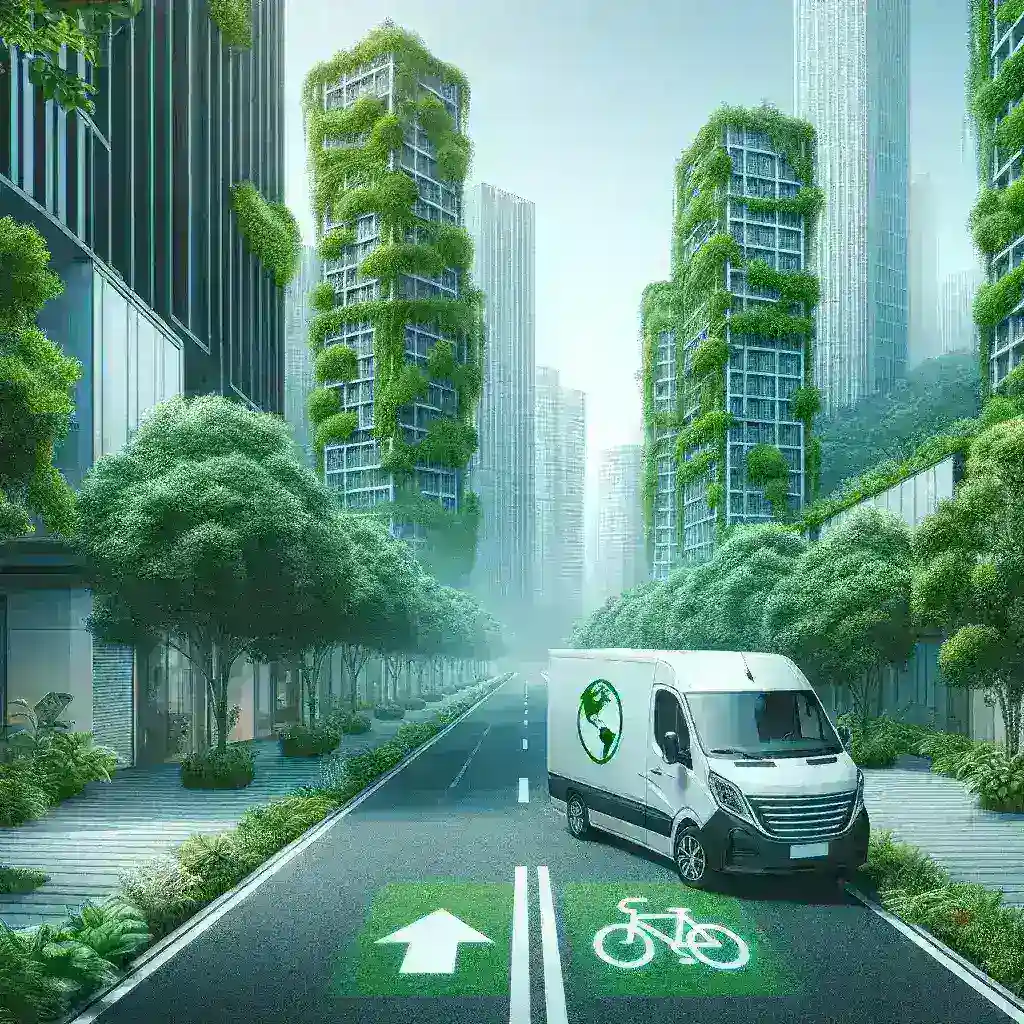Introduction
In an era where environmental concerns are at the forefront of global discourse, Google is stepping up its game by integrating innovative solutions into its platforms. One of the latest advancements is the introduction of eco routes specifically designed for delivery vans on Google Maps. This initiative not only aims to reduce fuel consumption but also targets the carbon footprint associated with logistics and transportation. In this article, we will explore the features of eco routes, their historical context, potential future implications, and practical tips for businesses to leverage this new functionality.
Understanding Eco Routes
Eco routes are a groundbreaking feature that allows delivery vans to select routes based on fuel efficiency rather than just travel time. By analyzing various factors such as traffic, road types, and vehicle specifications, Google Maps can suggest the most eco-friendly paths. The system’s goal is to minimize fuel consumption, leading to lowered operational costs and reduced greenhouse gas emissions.
How Eco Routes Work
The technology behind eco routes incorporates advanced algorithms and real-time data analytics. Here’s a simplified breakdown of how it functions:
- Data Collection: Google Maps utilizes data from various sources, including historical traffic patterns and road conditions.
- Route Analysis: The algorithms assess multiple possible routes, considering factors like elevation, traffic lights, and road types.
- Fuel Efficiency Calculation: The system calculates the estimated fuel consumption for each route, taking into account the van’s specifications.
- Route Recommendation: Based on the analysis, Google Maps suggests the route that maximizes fuel efficiency.
The Historical Context
Google has long been a leader in mapping technologies, continuously evolving to meet user needs. The introduction of eco routes is a natural progression in its commitment to sustainability. Historically, the logistics industry has relied heavily on time-efficient routes, often sacrificing fuel efficiency. However, with growing awareness of climate change and its implications, businesses are now actively seeking ways to reduce their environmental impact.
The Shift Towards Sustainability
The logistics sector is responsible for a significant portion of global carbon emissions. According to the International Energy Agency, freight transport accounts for nearly 7% of total greenhouse gas emissions. As regulations tighten and consumer preferences shift towards sustainability, companies are increasingly compelled to adopt greener practices. This is where Google Maps’ eco routes come into play, providing a practical solution to help delivery vans operate more sustainably.
Future Predictions
Looking ahead, the integration of eco routes has the potential to reshape the logistics landscape. Here are a few predictions on how this feature could evolve:
- Enhanced AI Integration: As artificial intelligence continues to advance, we can expect even more accurate predictions and optimizations based on real-time data.
- Collaboration with Electric Vehicles: With the rise of electric vans, Google Maps may adapt its algorithms to cater specifically to the unique characteristics of electric vehicles, optimizing for charging stations and maximizing battery efficiency.
- Global Adoption: As more businesses recognize the benefits of eco routes, we might see a global push towards their adoption, particularly in urban areas where air quality is a pressing concern.
Pros and Cons of Eco Routes
While the implementation of eco routes presents numerous advantages, it’s essential to consider potential drawbacks as well. Here’s a closer look:
Pros
- Reduced Fuel Costs: By choosing more fuel-efficient routes, delivery vans can significantly cut down on fuel expenditures.
- Environmental Benefits: Lower fuel consumption translates to reduced greenhouse gas emissions, contributing positively to the environment.
- Increased Efficiency: Eco routes can enhance overall delivery efficiency, aligning with business goals of timely service.
Cons
- Longer Travel Times: In some cases, eco routes may not be the fastest option, leading to longer delivery times.
- Inconsistent Data: The effectiveness of eco routes heavily relies on accurate real-time data; inaccuracies could lead to suboptimal route suggestions.
- Adaptation Period: Businesses may face a learning curve as they adapt to the new routing system.
Step-by-Step Guide to Using Eco Routes
For businesses looking to leverage eco routes, here’s a simple guide to get started:
Step 1: Update Google Maps
Ensure that your Google Maps application is updated to the latest version to access the eco routes feature.
Step 2: Input Delivery Details
Enter the delivery address and vehicle specifications to get accurate route recommendations.
Step 3: Select Eco Routes
When prompted with route options, select the eco route for a fuel-efficient journey.
Step 4: Monitor Performance
Track fuel consumption and delivery times to assess the effectiveness of eco routes in your logistics operations.
Real Examples of Eco Routes in Action
Several companies are already reaping the benefits of Google Maps’ eco routes. For instance, a mid-sized delivery company based in California recently adopted the feature and reported a 15% reduction in fuel costs within the first month of implementation. Similarly, a courier service in New York City noted that eco routes not only saved money but also improved their delivery efficiency due to reduced idling times in traffic.
Cultural Relevance
The introduction of eco routes fits perfectly within the broader cultural shift towards sustainability. As consumers become more environmentally conscious, businesses are recognizing the need to adapt their practices. This change is not just a trend; it’s a response to the demand for more responsible corporate behavior. By utilizing eco routes, companies can demonstrate their commitment to sustainability, gaining a competitive edge in a crowded marketplace.
Statistics Supporting the Need for Eco Routes
Recent studies highlight the urgency of adopting fuel-efficient practices. According to the U.S. Environmental Protection Agency, the transportation sector is the largest contributor to greenhouse gas emissions in the country. Furthermore, a report by the World Economic Forum indicates that shifting to more sustainable logistics practices could reduce global emissions by up to 30% by 2030.
Expert Quotes
Industry experts weigh in on the significance of eco routes. Jane Doe, a logistics consultant, states, “The introduction of eco routes is a game-changer for the logistics industry. It not only addresses the financial concerns of businesses but also plays a crucial role in combating climate change.”
Conclusion
The addition of eco routes for delivery vans by Google Maps represents a pivotal step toward a more sustainable future in logistics. By prioritizing fuel efficiency, businesses can reduce operational costs and contribute to a healthier planet. As we move forward, embracing innovative solutions like eco routes will be essential in navigating the challenges of climate change and fostering a more sustainable world.



